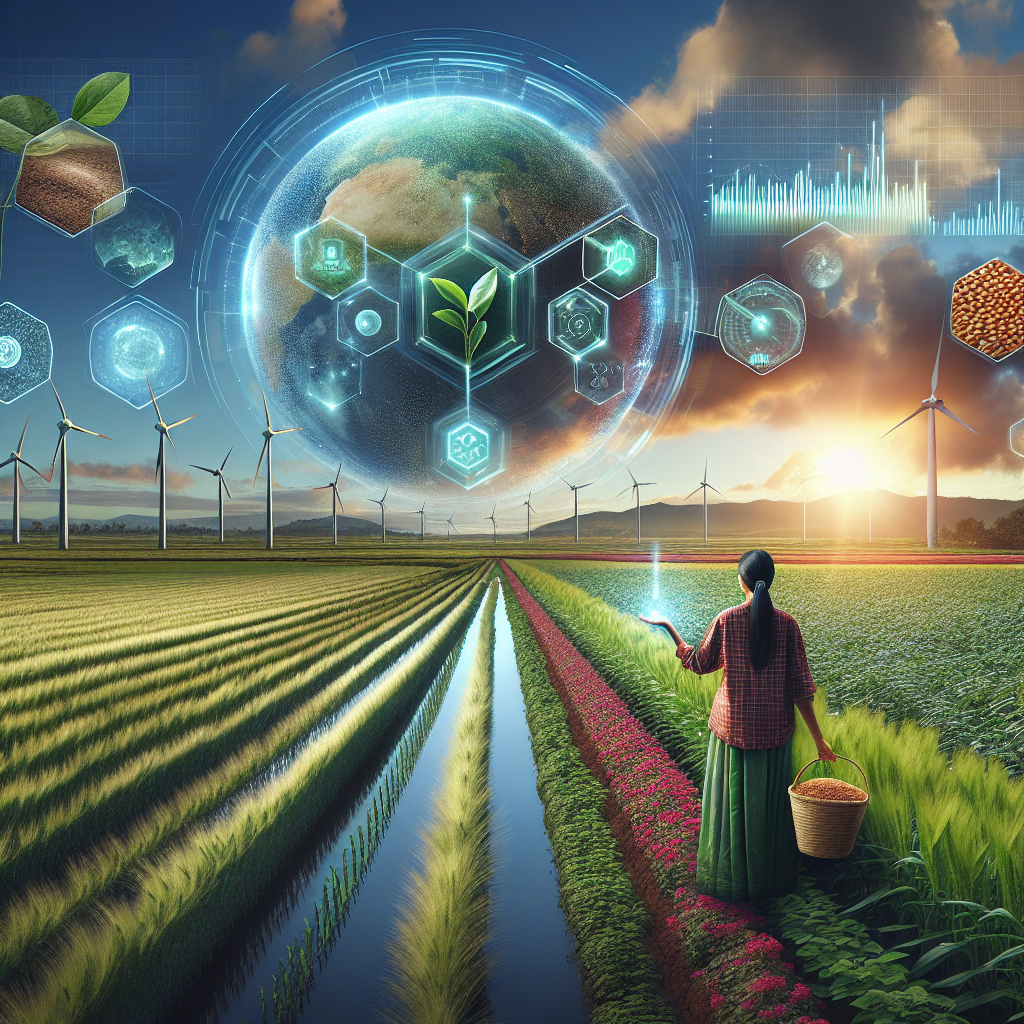The Impact of AI on Agricultural Sustainability and Resilience Planning
Introduction
Artificial Intelligence (AI) has become increasingly important in the agricultural sector, as it offers new ways to improve sustainability and resilience planning. With the world’s population projected to reach 9.7 billion by 2050, there is a growing need to produce more food while also minimizing the environmental impact of agriculture. AI has the potential to revolutionize farming practices, making them more efficient, environmentally friendly, and resilient to various challenges such as climate change and pests.
Impact of AI on Agricultural Sustainability
AI can help farmers make better decisions by analyzing vast amounts of data collected from sensors, drones, and satellites. This data can provide valuable insights into soil health, crop growth, and weather patterns, allowing farmers to optimize their use of resources such as water, fertilizers, and pesticides. For example, AI-powered systems can recommend the best time to plant crops, the optimal amount of irrigation, and the right type of fertilizer to use based on real-time data.
AI can also help farmers reduce waste and increase productivity. By using machine learning algorithms, farmers can predict crop yields more accurately, identify diseases and pests early on, and optimize harvesting techniques. This not only improves the efficiency of agricultural operations but also reduces the environmental impact of farming by minimizing the use of chemicals and water.
Another important aspect of agricultural sustainability is soil health. AI can analyze soil samples and recommend the best practices for soil conservation and improvement. By using AI-powered tools, farmers can maintain healthy soil, prevent erosion, and reduce the need for synthetic fertilizers and pesticides. This not only benefits the environment but also leads to better crop yields in the long run.
Impact of AI on Resilience Planning
In addition to improving sustainability, AI can also help farmers build resilience to various challenges such as climate change, droughts, and pests. By analyzing historical data and weather forecasts, AI can predict potential risks and help farmers prepare for them in advance. For example, AI-powered systems can recommend crop varieties that are more resistant to drought or pests, or provide early warnings of disease outbreaks.
AI can also help farmers respond more effectively to emergencies such as natural disasters. By analyzing real-time data from sensors and satellites, AI can provide insights into the extent of damage caused by floods, hurricanes, or wildfires, and help farmers take appropriate measures to minimize losses. This can include redirecting water flows, evacuating livestock, or adjusting planting schedules to account for the impact of the disaster.
Furthermore, AI can help farmers adapt to changing market conditions and consumer preferences. By analyzing market trends and consumer behavior, AI can recommend the best crops to grow, the most efficient distribution channels to use, and the most effective marketing strategies to employ. This allows farmers to stay competitive in the market and maximize their profits while also meeting the demands of consumers for sustainable and ethically produced food.
Frequently Asked Questions (FAQs)
Q: How can AI help farmers reduce the environmental impact of agriculture?
A: AI can help farmers reduce the environmental impact of agriculture by optimizing the use of resources such as water, fertilizers, and pesticides. By analyzing data collected from sensors and satellites, AI can recommend the best practices for soil conservation, pest control, and water management, leading to more sustainable farming practices.
Q: Can AI help farmers adapt to climate change?
A: Yes, AI can help farmers adapt to climate change by providing insights into weather patterns, predicting potential risks, and recommending crop varieties that are more resilient to droughts, floods, and pests. By using AI-powered tools, farmers can make better decisions about when to plant crops, how to manage water resources, and how to protect their crops from extreme weather events.
Q: How can AI help farmers build resilience to natural disasters?
A: AI can help farmers build resilience to natural disasters by analyzing real-time data from sensors and satellites, providing early warnings of potential risks, and recommending appropriate measures to minimize losses. By using AI-powered systems, farmers can respond more effectively to emergencies such as floods, hurricanes, or wildfires, and take proactive steps to protect their crops and livestock.
Q: What are some examples of AI applications in agriculture?
A: Some examples of AI applications in agriculture include predictive analytics for crop yields, disease detection in plants, pest control, soil analysis, weather forecasting, and market analysis. By using AI-powered tools, farmers can make better decisions about farming practices, resource management, and marketing strategies, leading to more sustainable and resilient agricultural operations.

